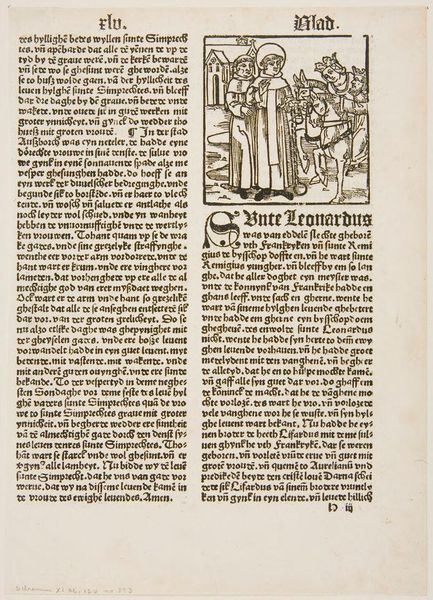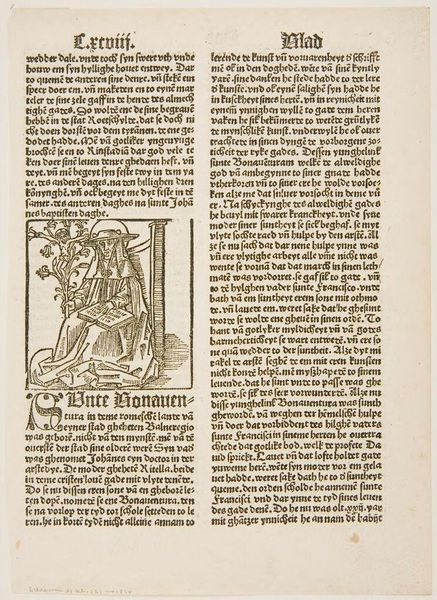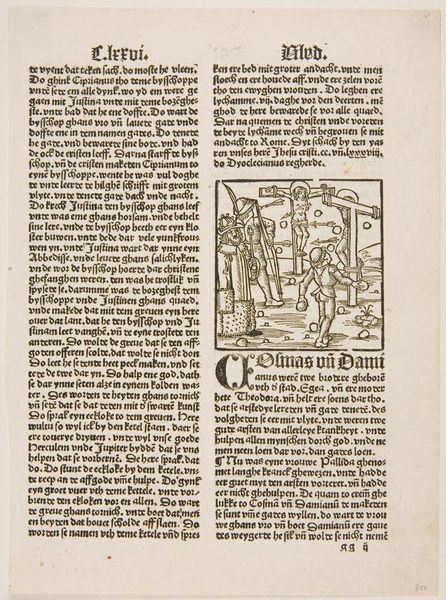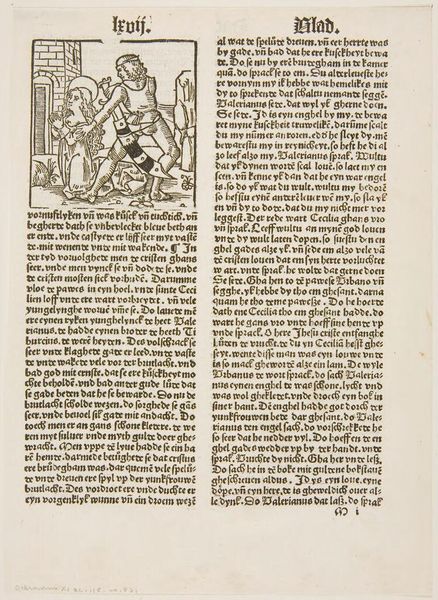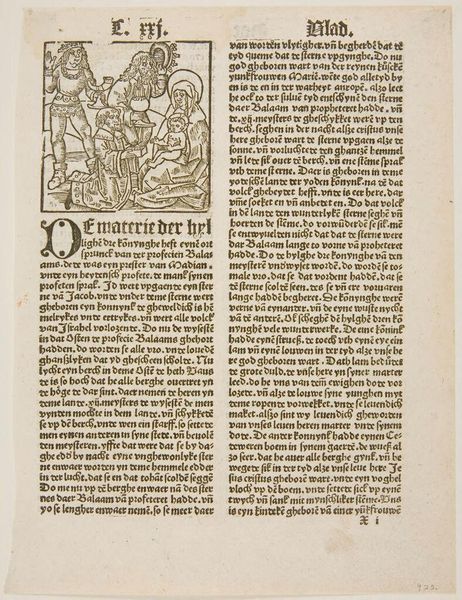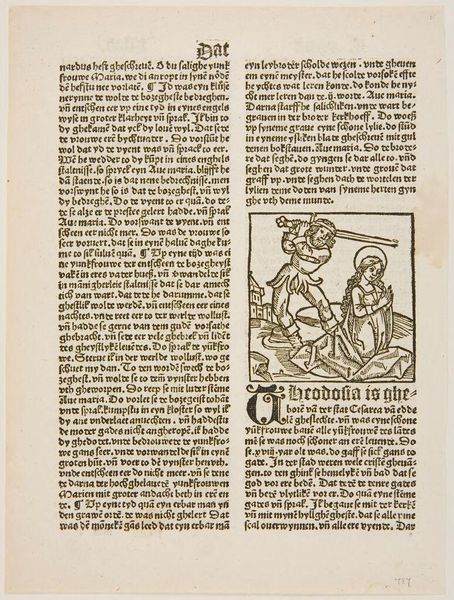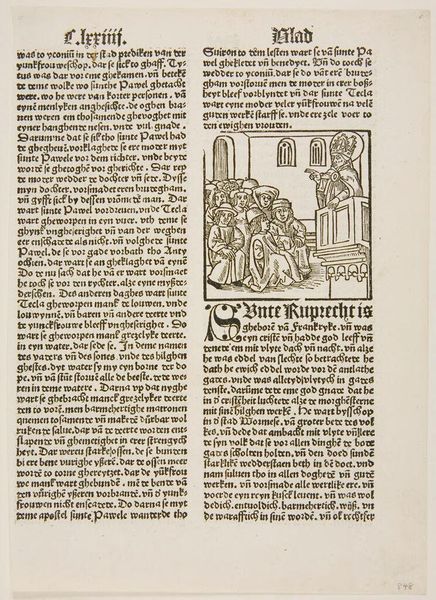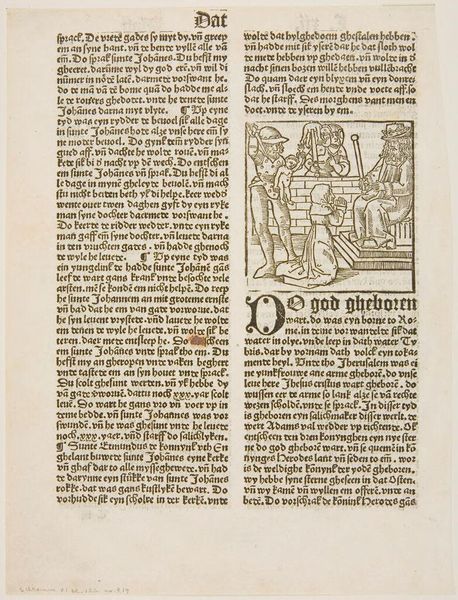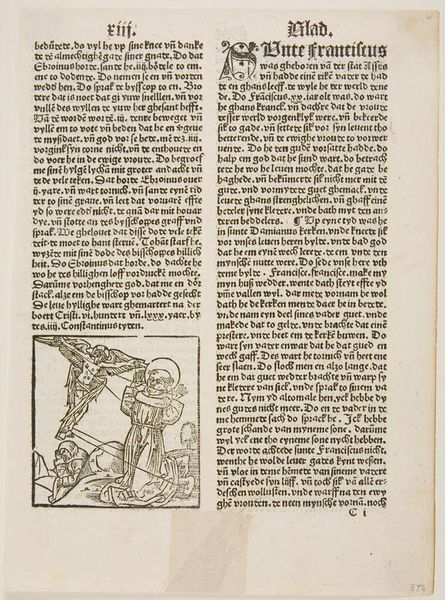
Copyright: CC0 1.0
Curator: Here we have an intriguing woodcut, "Saint Luke Painting the Virgin," by an anonymous artist. Its origins are unknown, but it resides in the Harvard Art Museums collection. What are your initial thoughts? Editor: It feels both reverent and surprisingly intimate, doesn't it? The composition, though simple, draws you into the creative act itself. It almost feels as if we're intruding upon a private moment of artistic inspiration and faith. Curator: Indeed. The imagery is quite powerful. Saint Luke, traditionally regarded as the patron saint of artists, is depicted capturing the Virgin Mary's likeness. The act of painting here becomes a form of devotion, imbued with symbolic weight. It suggests that art can be a conduit for spiritual understanding and veneration. Editor: But also consider this through the lens of power dynamics. Who gets to depict whom, and for what purposes? While seemingly reverent, the act of painting can also be interpreted as an act of claiming, of framing the divine through a specific cultural and perhaps even patriarchal perspective. Curator: That’s a compelling point. I'm struck by how it captures a moment in which artistic creation and religious belief intersect. Editor: For me, reflecting on this artwork highlights the ongoing need to critically engage with historical representations of faith and art, acknowledging the inherent biases and power structures that shape our understanding.
Comments
No comments
Be the first to comment and join the conversation on the ultimate creative platform.
